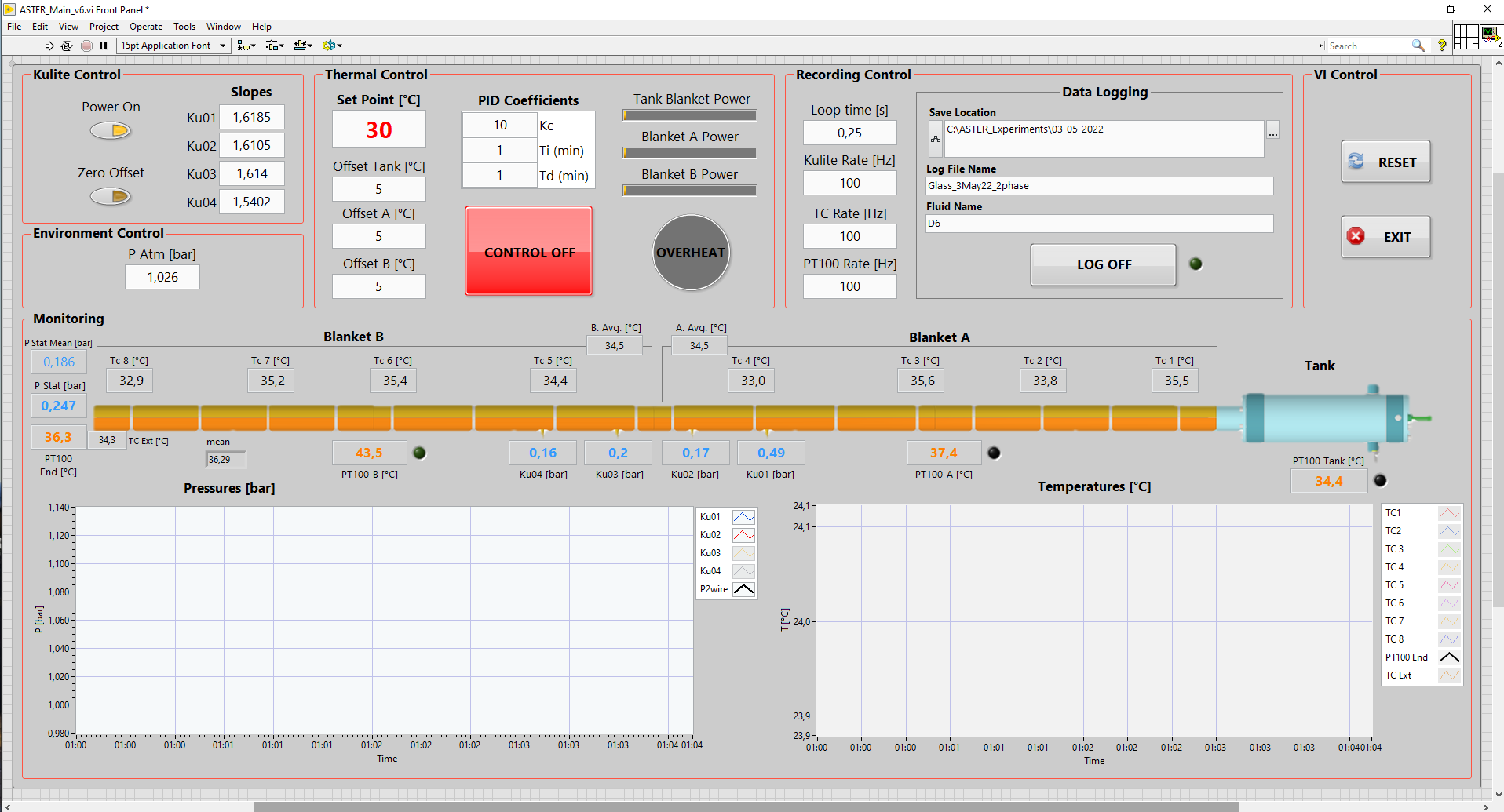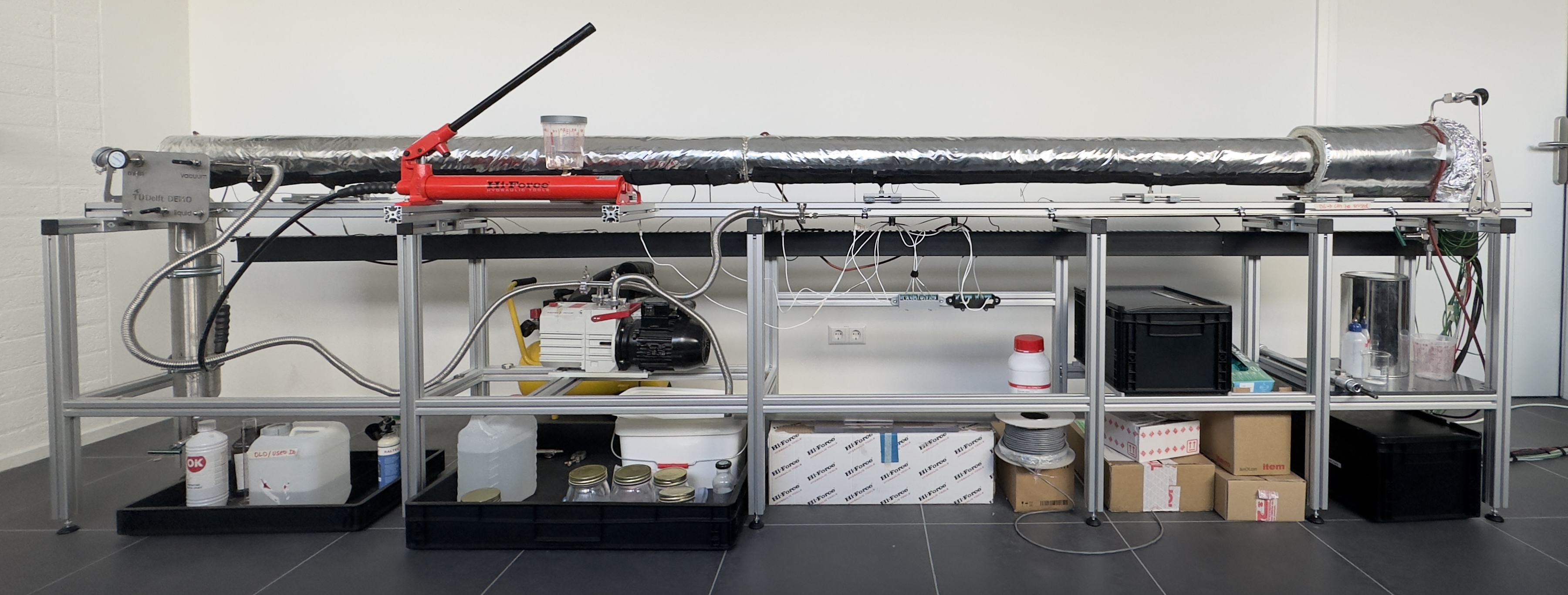ASTER
Asymmetric Shock Tube for Experiments on Rarefaction Waves (ASTER)
The ASTER is a unique Ludwieg-type tube designed to verify nonclassical gasdynamic effects in the dense vapours of organic fluids. Unlike conventional shock tubes that use metallic or polyester-based barrier elements, the ASTER employs a glass-disk diaphragm. This innovative modification can withstand high pressures and temperatures while enabling a near instantaneous and complete opening. This not only facilitates a sudden expansion of the working fluid but also guarantees a complete opening of the throat.The ASTER is a unique Ludwieg-type tube designed to verify nonclassical gasdynamic effects in the dense vapours of organic fluids. Unlike conventional shock tubes that use metallic or polyester-based barrier elements, the ASTER employs a glass-disk diaphragm. This innovative modification can withstand high pressures and temperatures while enabling a near instantaneous and complete opening. This not only facilitates a sudden expansion of the working fluid but also guarantees a complete opening of the throat.
Research objectives:
- Investigation of non-ideal gas dynamic effects on the propagation of pressure waves
- First experimental observation of the theoretically predicted rarefaction shock wave
- Accurate measurement of the fundamental derivative of gasdynamics
Features:
- 3 m long stainless steel pipe covered completely with 17.5 mm thick aluminium shells to ensure temperature homogeneity
- Capable of withstanding temperatures up to 400 degrees C and pressures up to 15 bar
- Glass disk diaphragm that enables quick and thorough opening
- Two pairs of fast-response high frequency pressure sensors for wave speed measurement.


